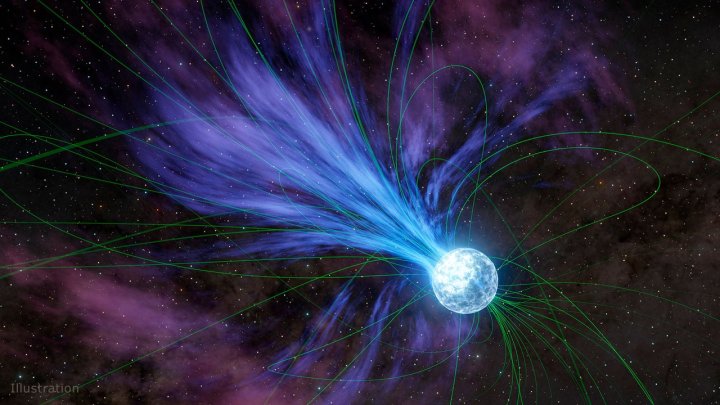Some of the oddest cosmic phenomena are short but tremendously powerful bursts of radio waves, which, in a fraction of a second, can give off as much energy as the sun does in a year. Known as fast radio bursts, these incredibly bright flashes of energy are thought to be related to dying stars called magnetars. Now, using two separate telescopes, astronomers have observed one of these events just a few minutes before and after it occurred, giving the best look yet at what causes these strange events.

Astronomers used NASA’s NICER (Neutron Star Interior Composition Explorer) on the International Space Station and NuSTAR (Nuclear Spectroscopic Telescope Array) in low-Earth orbit to observe a magnetar called SGR 1935+2154. Magnetars are a type of neutron star, the dense core left behind after a star collapses and with an extremely strong magnetic field. In October 2022, this magnetar gave off one of these strange, fast radio bursts.
The first thing the researchers noticed is that the burst occurred due to periods when the magnetar suddenly started to spin faster, which they refer to as glitches. “Typically, when glitches happen, it takes the magnetar weeks or months to get back to its normal speed,” said researcher Chin-Ping Hu of the National Changhua University of Education in Taiwan in a statement. “So clearly things are happening with these objects on much shorter time scales than we previously thought, and that might be related to how fast radio bursts are generated.”
Scientists still aren’t sure exactly what about the behavior of magnetars causes these powerful bursts, but it seems to be related to the combination of a strong magnetic field and the strong gravity of these objects. The cores of these objects are so dense that they can enter a state called a superfluid, which could travel to the surface and burst out of cracks caused by the spinning faster glitch. That could throw material outward with tremendous energy, as well as cause the spine rate to slow back down.
However, this is only a theory, as the researchers say they need to observe more bursts to be sure. “We’ve unquestionably observed something important for our understanding of fast radio bursts,” said fellow researcher George Younes of NASA’s Goddard. “But I think we still need a lot more data to complete the mystery.”
The research is published in the journal Nature.
Editors’ Recommendations

